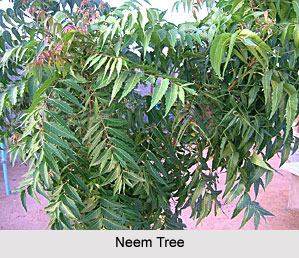 The Unani or Greek system of medicine is believed to have been introduced by Hippocrates which was later extensively developed by Arab doctors. The main theory of the Unani medicine is based on the concept that perfect balance between the elements (arkhan), humours (akhlat) and temperament (mizaj) is necessary for good health. Every individual has inherent powers of self-preservation, called quwat-e-modabira. The four humours present in the human body are dum (blood and other red body fluids), balgham (phlegm and other colourless fluids), safra (yellow fluids like bile) and saoda (black bile and other black fluids). The excessiveness of these humours determines an individual's temperament or mizaj which again could be of four kinds: damvi (sanguine or plethoric), safravi (choleric or bilious), balghami (cold or phlegmatic) and saodavi (melancholic).
The Unani or Greek system of medicine is believed to have been introduced by Hippocrates which was later extensively developed by Arab doctors. The main theory of the Unani medicine is based on the concept that perfect balance between the elements (arkhan), humours (akhlat) and temperament (mizaj) is necessary for good health. Every individual has inherent powers of self-preservation, called quwat-e-modabira. The four humours present in the human body are dum (blood and other red body fluids), balgham (phlegm and other colourless fluids), safra (yellow fluids like bile) and saoda (black bile and other black fluids). The excessiveness of these humours determines an individual's temperament or mizaj which again could be of four kinds: damvi (sanguine or plethoric), safravi (choleric or bilious), balghami (cold or phlegmatic) and saodavi (melancholic).Unani medicine in India originated with the coming of Arabs. Historical evidences speak that this medicine was used by the Delhi Sultan, the Khiljis, the Tughlaqs and the Mughal Emperors. During the 13th and 17th Century Unani Medication was practised profusely in India which was used to treat smallpox and measles. Unani medicine mainly diagnoses the pulse (nabz) besides an examination of the urine (bowel) and stool (baraz). While examining the pulse, numerous aspects are looked for, like volume, tension, blood volume, pattern of movement, rest, rhythm, irregularity and so on. Treatment is done for simple diseases and it is mainly through diet in the initial stages, followed by the administration of a single drug, failing which compound preparations may be administered. Each drug is placed under four categories, based on potency and efficacy.
There are four treatment therapies employed in Unani medicine in India including regimental therapy venasection, diuresis, Turkish bath, massage, purging, exercise and so on; pharmaco-therapy, use of herbal, animal and mineral drugs; surgery; and diet therapy which speaks about quantity and quality of food. Whereas for diabetes, several bitter and astringent items such as stones of the jamoon fruit, phalsa fruit, bitter gourd juice, tender neem shoots, bilva leaves and cottonseed kernels are prescribed by the Unani medicine in India.
For more visit the link given below: